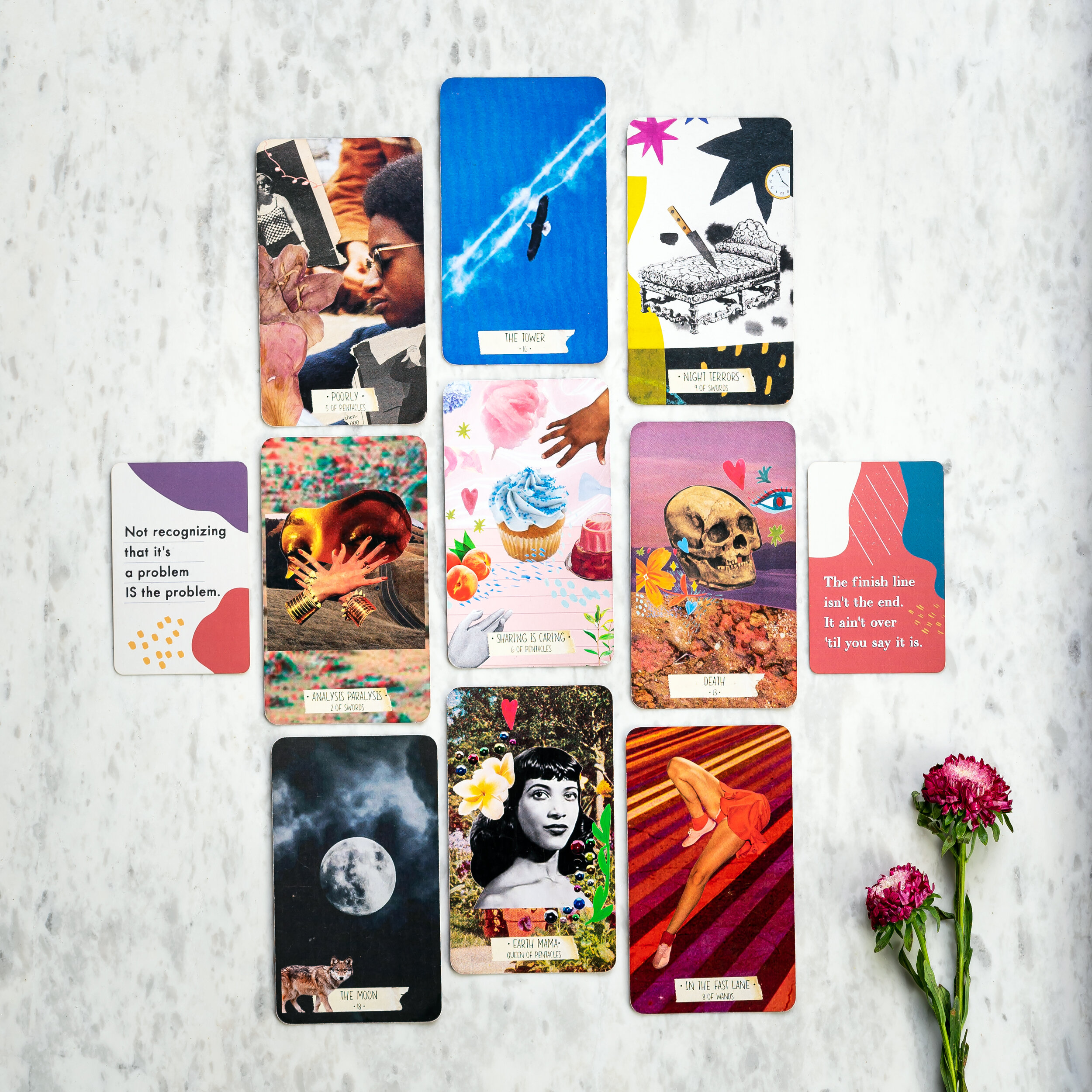Tarot or Oracle: Which Cards Should I Use?
Decks featured here are the Practical Magic Starter Deck and the #NoFilter Oracle Deck.
If you’re new to shuffling cards, you’re inevitably going to wonder about Tarot and Oracle cards. What’s the difference? What’s better for what? What’s right for me?
Every tarot reader and their mother has an answer to this question, so I thought I’d share mine. Also, I thought it would be good to have my thoughts on this permanently online for any newcomer who wants to ask the question.
So. Let’s get the nomenclature straight first. Oracle is the general term and refers to any cards used to divine answers to a question. The word oracle gets its roots in the Greek and Roman times. In mythology, oracles were the people who said something that happened in the future. So any card used to tell you something—regardless of system—is an oracle card.
Now, tarot sets itself apart because it follows a system. It’s 78 cards, 22 of which fall under the Major Arcana, and 56 of which fall under the Minor Arcana. The Minor Arcana is further divided into four suits, each with 10 pips and four court cards. Even though some modern tarot decks do add a random card or two to the 78, tarot is and always will follow this set system. Think of your regular playing card decks (which tarot was based on, JSYK!)—they never stray from the Ace to 10 + Jack / Queen / King configuration, right? Same with tarot. It’s always 78, it’s always cups / wands / swords / pentacles, and some variation of page / knight / queen / king. Take the PM Starter Deck—its imagery may be super modern, but it still follows the system to a tee. So tarot = structure + system.
Modern oracle decks, on the other hand, are a free for all. They’re usually based on a theme that the deck creator came up with. Take the #NoFilter Oracle Deck, for example. You would think our 52-card oracle deck was just a random bunch of quotes, but actually, when Mikko and I created the deck, we formulated three categories for all the #NoFilter quotes to fall under: action, niceness, and snark (harhar). The #NoFilterWoowoo Deck on the other hand may seem like we just threw 100+ sayings together, but if you read the fine print, you’ll see that everything we put in that deck was inspired by astrology—from the signs, to the elements, to planets and houses. Basically, modern oracle decks have no set suits, no set structure, no formal court cards, no rules.
So, how do I know if I should be using a Tarot deck or an Oracle deck?
I have two answers for this. The quick and dirty one is it all boils down to personality. Just through observation over the last couple of years I’ve been shuffling cards and teaching tarot, I’ve noticed that people who respond really well to structure, logic, and order respond to Tarot really well. People who are comfortable with rote memorization, progression, and putting ideas into neat little boxes usually take to tarot with little effort. On the opposite side of the spectrum are people who just want to hear an answer to any question right away, those who can’t be bothered with memorization, and those who usually just want to hear an affirmation respond better to oracle decks.
This is because Tarot’s structure takes time to learn, and while some oracle decks may also require research and reflection, most of them deliver one-word or one-sentence answers to a question you’re asking. So if we’re going by stereotypes, decide which one you are between the two and then decide which deck to invest in.
My second answer goes a little deeper than this. Tarot’s structure allows it to cover the full breadth of human experience. So if you’re interested in learning about the human psyche and are curious about all the facets of being human (both light and shadow aspects!), then I would strongly advise taking it up.
I feel that all the messages you would otherwise pull in an oracle deck can and will be found in tarot and that’s why I would recommend it over an oracle deck, especially for someone who wants to get really serious with the cards.
It just takes a little more study time and a lot more patience to figure it out.
And how about using both?
I feel like as long as you understand how the tarot works, it’s okay to start mixing things up. I mean, I do this all the time in all my readings—I show up with three or four decks at any point in time because I feel each one has a unique voice that can contribute to the conversation.
But because tarot is so comprehensive, it is always the backbone of any reading I do. You can use a bunch of tarot cards in a reading (take the spread in the photo above) and be able to whip up a solid narrative for the person you’re reading for. I can’t say oracle does the same—using something like 9 or 10 oracle cards for just one reading can leave me (and the person I’m reading for) a lot confused. So yes, use them both, but do so with intention.
For my own practice, I find that oracle cards are best used sparingly for them to make an impact. I like to punctuate tarot readings with one or two oracle cards—to me, they act like periods or question marks or exclamation points at the end of a sentence. Use too many and you dilute the entire message and just make everything confusing.
If you’re new to cards, I hope this writeup brings a little bit of clarity to you. And if your world is opening up to card collecting—tarot, oracle, and all of it—I say GET THEM ALL. :)

